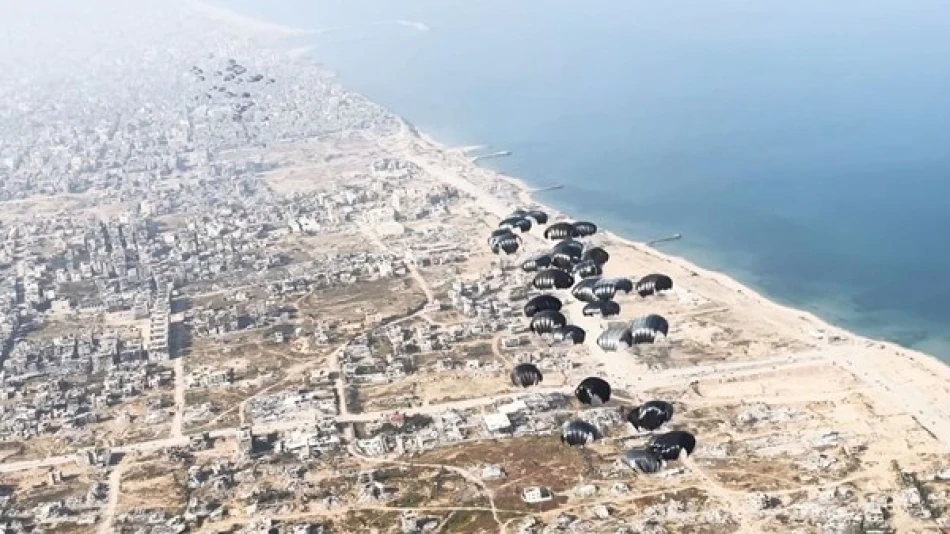
UAE Airlifts Aid, Sends 58 Trucks to Gaza as Humanitarian Efforts Continue
UAE Intensifies Gaza Relief Operations as Humanitarian Crisis Deepens
The United Arab Emirates has escalated its humanitarian intervention in Gaza, completing its 57th consecutive airdrop under the "Birds of Goodness" initiative while simultaneously deploying ground convoys and infrastructure projects. This multi-pronged approach signals a strategic shift toward sustained humanitarian diplomacy as traditional aid channels remain compromised by ongoing security challenges.
Coordinated Air and Ground Operations
Working in partnership with Jordan, the UAE conducted its fourth consecutive day of airdrops targeting Gaza's most inaccessible and severely affected areas. The operation, part of the broader "Noble Knight 3" campaign, reflects the Emirates' commitment to circumventing ground-level delivery obstacles that have plagued international relief efforts.
The scale of the operation is significant: 196 specialized aircraft have delivered approximately 3,775 tons of food and emergency supplies since the initiative's launch. This represents one of the most sustained airdrop campaigns in the region's recent history, comparable to international relief efforts during major humanitarian crises in Syria and Yemen.
Infrastructure Focus Sets UAE Apart
Beyond immediate relief, the UAE's approach distinguishes itself through long-term infrastructure investment. Fifty-eight Emirati trucks entered Gaza through various border crossings, not only carrying supplies but also advancing a water desalination pipeline extension project.
Strategic Water Infrastructure
The water pipeline project addresses one of Gaza's most critical long-term challenges. With the territory's water infrastructure severely compromised, the UAE's investment in desalination capacity represents a shift from emergency aid to sustainable development—a model previously employed in the Emirates' humanitarian work in Yemen and Somalia.
Regional Diplomatic Implications
The UAE's sustained engagement reflects broader regional realignments following the Abraham Accords. Unlike traditional Gulf humanitarian efforts that often operated through international organizations, this direct bilateral approach with Jordan demonstrates the Emirates' growing confidence in independent diplomatic action.
This strategy mirrors successful UAE humanitarian interventions in other conflict zones, where the country has built soft power influence through sustained, visible relief operations. The "Birds of Goodness" branding itself represents sophisticated public diplomacy, creating positive associations with Emirati involvement.
Operational Challenges and Innovation
The emphasis on aerial delivery highlights the practical constraints facing all international actors in Gaza. The UAE's investment in specialized aircraft and precision delivery systems suggests this operational model may become a template for future humanitarian interventions in contested territories.
The coordination with Jordan is particularly significant, as it provides the UAE with regional legitimacy while offering Jordan economic benefits through logistical partnerships. This arrangement could serve as a model for other Gulf states seeking to engage in humanitarian diplomacy without direct territorial access.
Measuring Impact and Sustainability
With nearly 4,000 tons delivered and infrastructure projects advancing simultaneously, the UAE's approach represents a hybrid model of humanitarian intervention. The sustainability of these operations will likely depend on broader regional stability and the Emirates' capacity to maintain logistical partnerships with Jordan and other regional actors.
The success of this model could influence how other Gulf states approach humanitarian crises, potentially shifting from traditional donor relationships toward more direct operational involvement in regional conflicts and disasters.
 Layla Al Mansoori
Layla Al Mansoori







